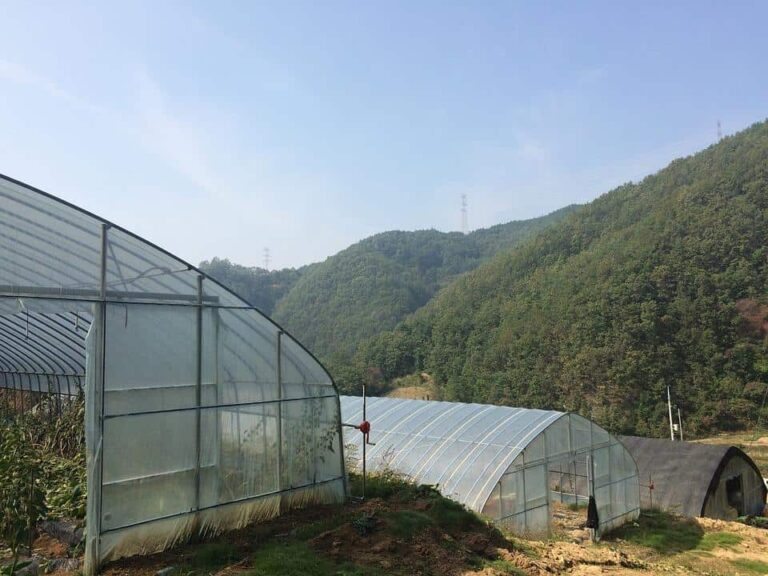Growing Cilantro Faster and More Effectively
The easiest way to grow cilantro is by sowing the seeds directly into the ground or into a container. Since cilantro has a short growing season, you’ll want to direct sow seeds every few weeks or so from spring through fall to keep the plant growing. Cilantro isn’t too needy as a plant and will thrive with a few light feedings early on and with a regular supply of water throughout the growing season. When you grow cilantro, you can harvest both the leaves and the seeds for cooking.
Planting Cilantro
You can plant cilantro in your garden from either seeds or transplants. Seeds are often ideal, as you’ll be able to grow multiple plants from them and can even double your harvest, by planting some seeds in the spring and another batch in the fall.
Transplants give you a headstart on growing cilantro, but come with one major caveat. Cilantro is known for bolting quickly, or producing a flower stalk and going to seed. Transplants are more likely to bolt even more quickly than plants grown from seed, meaning you’ll have less time to enjoy the leaves from the plant before it starts producing seeds.
Another reason to start from seeds rather than a transplant is because cilantro just doesn’t like to be transplanted. The plant has a taproot, according to Bonnie Plants, which makes transplanting it tricky.
Starting Cilantro from Seed
Since cilantro has such a short growing period, it’s ideal to start the plant from seed and to plant it in succession throughout the growing season, so that you have a steady crop through the spring, summer and fall. According Vegetable Gardener, some of the cilantro you plant will self-seed, so that you’ll be able to enjoy new growth without much effort.
As the video from the Small Town Gardener shows, you don’t have to particularly precise when planting cilantro from seed. Scatter the seeds over the growing area, cover with soil or not, and water well. You can thin the seedlings as they begin to grow.
Start your first crop by direct sowing the seeds about two weeks before the last frost date in your area. Plant a few more seeds every two to three weeks after that to keep the crop going. If you live in an area with very mild winters, you can sow seeds through the fall. The plants will survive over the winter and begin producing again in the spring.
Caring for Cilantro
Cilantro needs a fair amount of sun, plenty of water, and a decent amount of room to grow well. Thin your seedlings to stand about six inches apart when they are about two inches high.
If you live in an area that doesn’t get too hot in the spring or summer, you can plant cilantro in full sun. A spot that gets a bit of shade can be ideal if you do live in a hot area, as it will keep the cilantro cool and delay bolting for some time.
You want to give cilantro some fertilizer, but not too much. Too much fertilizer, especially a nitrogen based fertilizer, will produce a plant that looks good but that doesn’t have much flavor. Fertilize with fish or seaweed emulsion right after planting, but limit the feeding to just once or twice during the growing season.
Young cilantro needs more water than more established cilantro. During the first few weeks of the plant’s life, give it about an inch of water each week. You can cut back on the water as it grows. Give it enough to keep the soil from drying out, but don’t over saturate the soil.
Growing Cilantro in a Container
Cilantro grows well in a container, either indoors or out. If you grow cilantro indoors, it’s important that you put the container in an spot that gets enough sunlight or put the pot under a grow light. Without adequate light, the cilantro will grow long and lanky, without many leaves.
The trick to getting a full harvest of cilantro from a container is to plant several plants very close together. Instead of thinning each plant to a distance of about six inches, like you would in the ground, you want to grow container cilantro very densely.
A wide, not very deep container is ideal for cilantro. Look for a pot that is about 8 inches deep and about 18 inches in diameter. It should have drainage holes to keep the soil from becoming too moist and soggy.
Fill the pot with container soil, then spritz with water to moisten it. Scatter the seeds across the surface of the soil, then cover with about a 1/4 inch of soil. Water gently.
Harvesting Cilantro
You can harvest cilantro relatively early in the growing season. The Old Farmer’s Almanac recommends harvesting when the plant is low, before it has produced its flower stalk and gone to seed.
When harvesting the leaves, cut about one third of the plant at a time, leaving the rest intact for a later harvest. Cut the stems about an inch or so above the ground. To get the most from your cilantro, harvest a different area each time. By the time you’ve harvested the third or fourth area of your cilantro planting, the first area will have had time to grow back.
Along with harvesting the leaves of the plant for use in cooking, you can also harvest the seeds from the flower heads. You can either use the seeds, which are called coriander, in cooking or save them for planting in the garden next season.
Wait until the plant has dried out and turned brown to harvest the seed heads. Cut the seed heads off of the plant and put them in a paper bag to finish drying. After a few days in the bag, the seeds will fall off of the heads. Store the seeds in a cool, dry place.
If you can’t get enough of cilantro in your cooking, it pays to grow it in your garden. If you leave some of the seeds on the plant, they’ll fall onto the ground and sow themselves, meaning you’ll have cilantro growing in your garden for many seasons to come.






